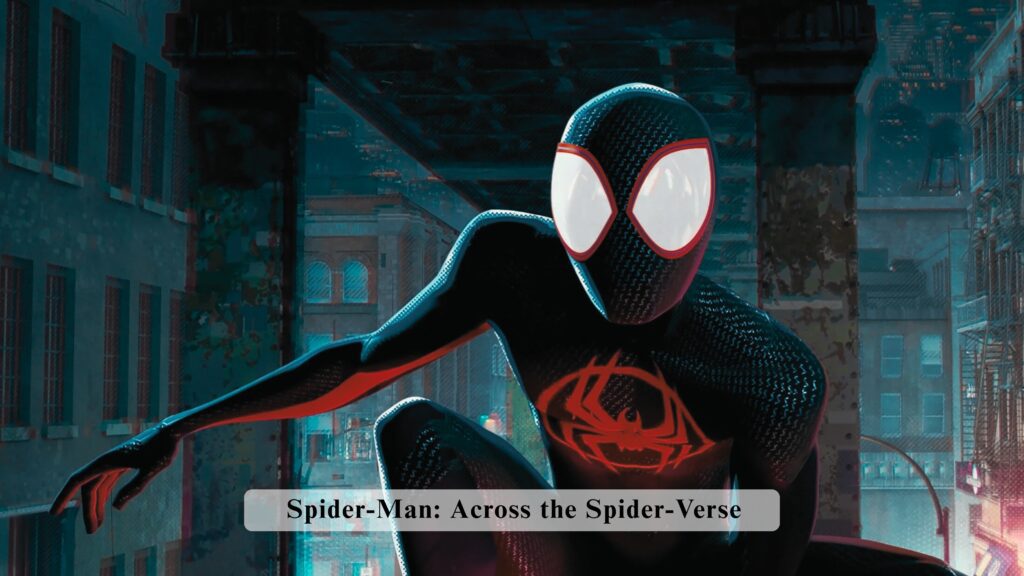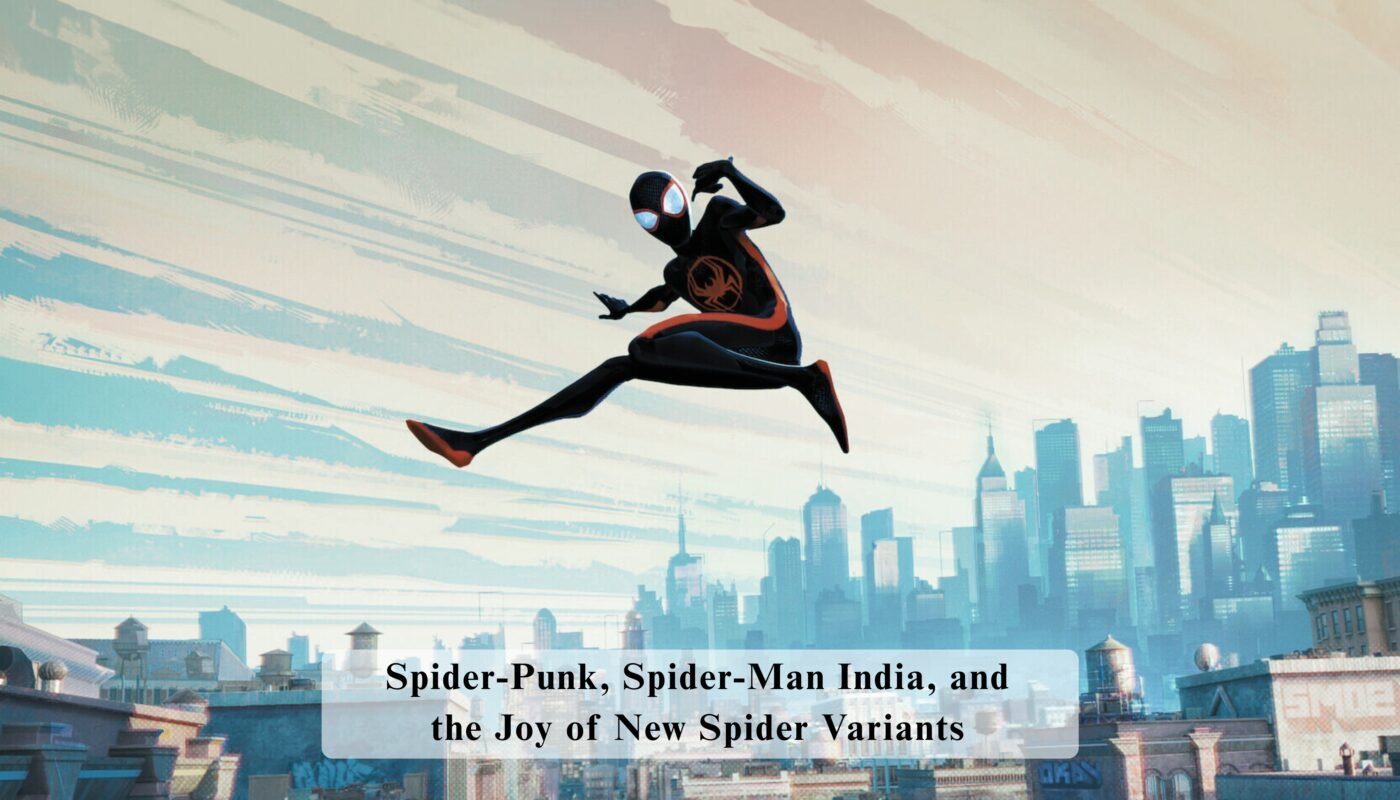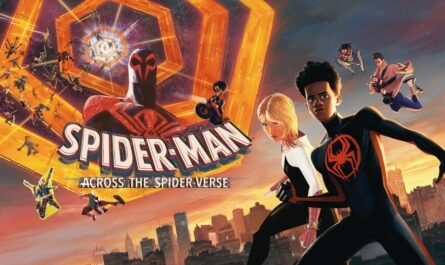1. Introduction – Stepping Back Into the Multiverse
From the first frame of Spider Man Across the Spider Verse, I knew I was stepping into something extraordinary. The familiar world of Miles Morales greets us, but it’s bigger, bolder, and more layered than ever before. The first film was a revolution in animated storytelling, blending comic-book artistry with heartfelt character arcs. This sequel doesn’t just match that—it surpasses it in scope and ambition.
Miles is no longer the wide-eyed rookie. He’s grown, both as a person and as a hero, but with growth comes new challenges. The multiverse is now at the forefront, with countless realities and Spider-People, each bringing unique perspectives. Yet, the heart of the story remains deeply personal, centering on family, friendships, and choices that test his moral compass.
What impressed me most was how the film balanced its scale. Yes, there are jaw-dropping action sequences and stunning visuals, but these never overshadow the emotional weight. From the very start, it’s clear—this isn’t just another animated superhero story. It’s an evolution of the genre, one that understands the power of both spectacle and soul.
2. Spider-Punk, Spider-Man India, and the Joy of New Spider Variants
One of the film’s most exciting aspects is its introduction of fresh Spider variants, each with a unique personality and art style. Two standouts for me were Spider-Punk (Hobie Brown) and Spider-Man India (Pavitr Prabhakar).
Spider-Punk is pure rebellion in motion. His animation is jagged and ever-changing, like ripped magazine cutouts brought to life. Hobie isn’t just a visual experiment; he’s a character who questions authority, encouraging Miles to think for himself. His presence injects an anti-establishment energy that challenges the strict order of the Spider Society.
Then there’s Pavitr Prabhakar, the effortlessly charismatic hero of Mumbattan — a vibrant blend of Mumbai and Manhattan. His introduction is brimming with cultural charm, from street chai vendors to colorful skylines. Pavitr’s humor, confidence, and acrobatics make his scenes a joy to watch.
What’s remarkable is how these variants feel like more than cameos. They enrich the world, showing that Spider-Man’s values can take many forms. Through them, the film celebrates diversity—not just in backgrounds, but in heroism itself—proving that the mask can fit anyone, anywhere.
3. The Chase Through Mumbattan: A Visual and Emotional Rollercoaster
The Mumbattan chase is one of Spider Man Across the Spider Verse most exhilarating sequences. The moment Miles and Gwen swing into Pavitr’s world, we’re treated to a visual feast—warm golden tones, bustling streets, and architectural blends of East and West. The city feels alive, a character in its own right.
This energy shifts into high gear when The Spot attacks, using his bizarre portal powers to wreak havoc. The ensuing chase is a breathtaking ballet of movement—web-slinging past temple spires, flipping over rickshaws, dodging collapsing bridges. The action is fast, but never messy; the camera glides with a rhythm that mirrors the city’s pulse.
Amid the chaos lies an emotional turning point. Miles saves Inspector Singh—Pavitr’s girlfriend’s father—altering what was supposed to be a “canon event.” This defiance plants the seeds for the film’s central conflict.
The Mumbattan chase isn’t just about spectacle. It’s a moment that fuses heart-pounding tension with character-defining choices, reminding us that the best action scenes are the ones that leave emotional ripples long after the adrenaline fades.
4. Breaking the Canon: Miles’ Game-Changing Decision

In the Spider Society, “canon events” are sacred—pivotal tragedies that every Spider-Person must endure to maintain the stability of the multiverse. For many, this includes the death of a police captain close to them. It’s seen as inevitable, unchangeable.
But Miles Morales doesn’t buy into that. When he discovers his own father is destined to die as part of a canon event, he makes a choice: he will save him, no matter the cost. This decision is the heartbeat of Spider Man Across the Spider Verse.
It’s a rejection of fatalism, a refusal to let rules dictate morality. In doing so, Miles goes from being a member of the Spider Society to being its outcast. His defiance isn’t arrogance—it’s conviction. He believes a hero’s job is to save lives, period.
This moment reframes the film’s stakes. It’s no longer just about battling villains—it’s about questioning the very system that governs the Spider-Verse. And in that rebellion, Miles becomes something more than just another Spider-Man. He becomes his own Spider-Man.
5. The Reunion and Rift Between Miles and His Parents
At its core, Spider Man Across the Spider Verse is a story about family. Miles’ parents, Jefferson and Rio, love him deeply, but their relationship is strained. They see a teenager pulling away, missing events, keeping secrets—but they don’t know the half of it.
The scenes with his mother, Rio, are especially tender. She senses that her son is at a turning point in his life, worried that he’s growing up too fast and drifting beyond her reach. Her words are filled with love but also concern, grounding the film’s larger-than-life stakes in something deeply relatable.
The rift grows as Miles’ double life collides with his responsibilities at home. He wants to be the perfect son and the perfect hero, but balancing both is becoming impossible. When Miles learns of his father’s impending fate, the urgency to protect him becomes personal, not just heroic.
This emotional thread gives the film weight. Superhero or not, every child fears disappointing their parents. And every parent fears losing their child—to danger, to distance, or to time.
6. The Art Style Magic – How Animation Elevates the Story
If the first film redefined animation, Spider Man Across the Spider Verse explodes its possibilities. Every world is given its own distinct style, turning the film into a living gallery.
Gwen Stacy’s Earth is painted in soft, shifting watercolors that reflect her emotions—calm blues in tender moments, fiery pinks during conflict. Mumbattan bursts with vibrant, saturated hues, echoing the life and chaos of its streets. Spider-Punk’s jagged, collage-like animation changes frame by frame, a perfect extension of his rebellious spirit.
Even the Spider Society’s headquarters is a sensory overload—thousands of Spider variants in countless styles, yet harmonized into a cohesive visual rhythm. These aren’t just aesthetic choices; they’re storytelling tools. The look of each scene deepens our understanding of the world and its characters.
This dedication to visual identity makes the film endlessly rewatchable. You’re not just following a plot—you’re experiencing art in motion, where every brushstroke, texture, and color choice adds meaning.
7. Final Thoughts – Why Spider-Man: Across the Spider-Verse Redefines the Superhero Genre
By the time the credits rolled, I knew Spider Man Across the Spider Verse wasn’t just a great sequel—it was a landmark in superhero storytelling. It combines jaw-dropping visuals with layered character arcs, refusing to sacrifice one for the other.
The film’s themes—choice, identity, defiance of fate—resonate far beyond the Spider-Verse. It’s a reminder that heroism isn’t about following the rules, but about standing up for what you believe is right, even when the world disagrees.
It’s also a celebration of diversity—not just in ethnicity, but in art styles, perspectives, and approaches to storytelling. Every Spider-Person is unique, yet united by shared values.
Most importantly, this movie proves that animation can be just as emotionally impactful and narratively complex as live-action, if not more so. It’s not bound by realism, which means it can express feelings and ideas in ways no other medium can.
Spider Man Across the Spider Verse doesn’t just entertain—it inspires. And in doing so, it sets a new standard for what superhero films, and animated cinema as a whole, can achieve.
Enjoyed this read? Explore more in-depth movie blogs and reviews by clicking here




